Table of Contents
Parkour and freerunning are two popular disciplines that involve overcoming obstacles by using movement. While they share many similarities, there are also some key differences between the two. This article from Kizworld explores The difference between parkour and freerunning, including their philosophies, movements, environments, and competitions. Whether you're a beginner or an experienced athlete, this article will help you understand the difference between these two disciplines and decide which one is right for you.
The Difference Between Parkour and Freerunning: A Comprehensive Guide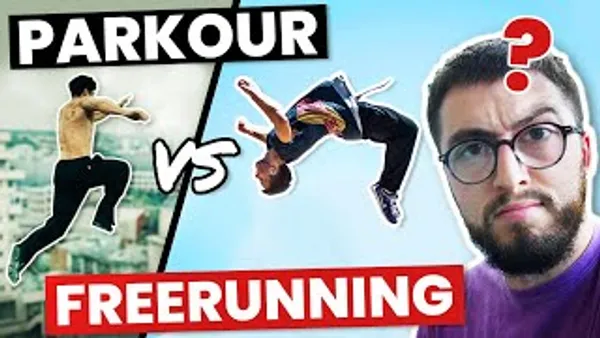
I. What is Parkour?
What is Parkour?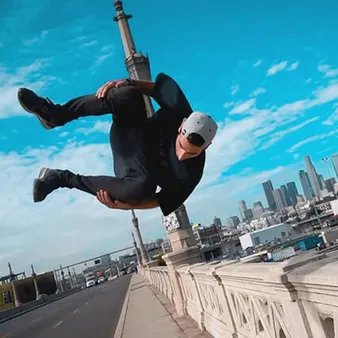
Parkour is a discipline that involves overcoming obstacles by using movement. It is a physically and mentally challenging activity that can be practiced in both urban and natural environments. Parkour is often associated with free running, but there are some key differences between the two disciplines.
Parkour is a philosophy and a way of life. It is about more than just overcoming obstacles; it is about learning to move efficiently and creatively, and to adapt to any environment. Parkour practitioners, or traceurs, believe that the body is capable of amazing things, and they strive to push their limits and explore their potential.
Key Differences Between Parkour and Freerunning
Parkour | Freerunning |
|---|---|
Focuses on efficiency and overcoming obstacles | Focuses on creativity and self-expression |
Typically practiced in urban environments | Can be practiced in both urban and natural environments |
Less emphasis on tricks and stunts | More emphasis on tricks and stunts |
More structured and disciplined | More free-form and improvisational |
II. Movement
Parkour movements are based on natural human movement patterns. Traceurs use a variety of techniques to overcome obstacles, including running, jumping, climbing, and vaulting. They also use their environment to their advantage, using walls, rails, and other objects to help them move.
Parkour is a physically demanding activity, and it requires a high level of fitness. Traceurs need to be strong, agile, and coordinated. They also need to have good balance and spatial awareness.
Environment
Parkour can be practiced in both urban and natural environments. Urban parkour is typically practiced in cities, where traceurs use the built environment to create obstacles and challenges. Natural parkour is practiced in natural settings, such as forests, mountains, and beaches.
The environment in which parkour is practiced can have a significant impact on the way it is performed. Urban parkour is often more technical and requires more precision, while natural parkour is often more fluid and creative.
Competition
Parkour is not a competitive sport, but there are a number of parkour competitions held around the world. These competitions typically involve traceurs performing a series of tricks and stunts in a timed or judged format.
Parkour competitions can be a great way for traceurs to showcase their skills and to learn from each other. They can also help to raise awareness of parkour and to promote the discipline.
III. Which One is Right for You?
If you are looking for a physically and mentally challenging activity that will help you to push your limits and explore your potential, then parkour may be the right choice for you. Parkour is a great way to get in shape, learn new skills, and make new friends.
If you are interested in trying parkour, there are a few things you should keep in mind. First, it is important to find a qualified instructor who can teach you the basics of parkour and help you to stay safe. Second, it is important to start slowly and gradually increase the difficulty of your training as you get stronger and more experienced. Third, it is important to listen to your body and to take breaks when you need them.
With a little effort and dedication, you can learn to overcome any obstacle and achieve your parkour goals.
- The Difference Between Parkour and Freerunning
- How to Do a Handstand
- The Benefits of Gymnastics for Kids
- The Best Gymnastics Equipment for Home Use
IV. What is Freerunning?
What is Freerunning?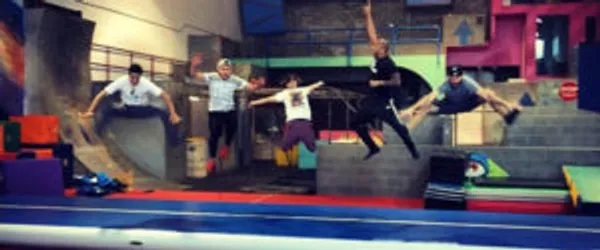
Freerunning is a discipline that involves using movement to overcome obstacles in a creative and fluid way. It is similar to parkour, but it is more focused on expressing oneself through movement and less on efficiency and speed. Freerunning is often performed in urban environments, and it can involve climbing, jumping, vaulting, and other acrobatic moves. Read the article The Difference Between Parkour and Freerunning: Which One is Right for You? to learn more about the difference between freerunning and parkour.
Philosophy
Freerunning is a philosophy that emphasizes freedom and expression. Freerunners believe that they should be able to move in any way they want, and they should not be limited by obstacles or conventions. They also believe that freerunning is a way to connect with their environment and to learn new things about themselves.
Movement
Freerunning movements are typically characterized by their fluidity and creativity. Freerunners use a variety of moves to overcome obstacles, including jumps, vaults, rolls, and slides. They also often incorporate elements of acrobatics and dance into their movements. The article The Benefits of Parkour and Freerunning discusses the physical and mental benefits of these exciting sports.
Parkour | Freerunning |
|---|---|
Efficient and fast | Creative and fluid |
Focused on overcoming obstacles | Focused on expressing oneself through movement |
Often performed in rural areas | Often performed in urban environments |
Environment
Freerunning can be performed in a variety of environments, but it is most commonly practiced in urban areas. This is because urban environments offer a wide variety of obstacles, such as walls, rails, and stairs. Freerunners also enjoy the challenge of using their creativity to overcome these obstacles in new and interesting ways. Read the article How to Find the Best Parkour Spots and Environments to find the perfect location to practice parkour or freerunning.
Competition
Freerunning competitions are held all over the world. These competitions typically involve freerunners performing a series of tricks and flips in front of a panel of judges. The judges score the freerunners on their creativity, skill, and execution. The article The Top Parkour Competitions and Events provides more information about the major competitions in the sport.
V. Which One is Right for You?
If you are looking for a discipline that emphasizes freedom and expression, then freerunning may be the right choice for you. Freerunning is a great way to challenge yourself physically and mentally, and it can also be a lot of fun. However, if you are looking for a discipline that is more focused on efficiency and speed, then parkour may be a better choice. Parkour is also a great way to challenge yourself, and it can also be a lot of fun. Ultimately, the best way to decide which discipline is right for you is to try them both and see which one you enjoy more.
VI. The Difference Between Parkour and Freerunning
The Difference Between Parkour and Freerunning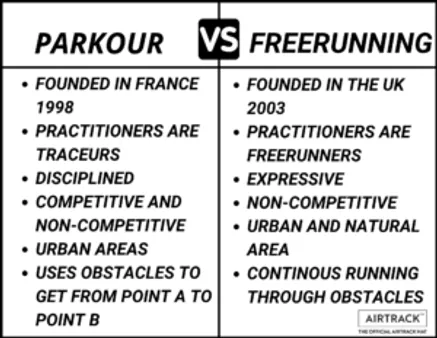
Philosophy
Parkour is a discipline that emphasizes efficiency and overcoming obstacles, while freerunning is more focused on creativity and self-expression. Parkour practitioners aim to move from one point to another as quickly and efficiently as possible, using any means necessary. Freerunners, on the other hand, are more interested in creating visually appealing and challenging movements, often incorporating flips, spins, and other acrobatic tricks.
Check out our article on the benefits of parkour to learn more about this discipline.
Parkour | Freerunning |
Efficiency | Creativity |
Overcoming obstacles | Self-expression |
Moving quickly and efficiently | Creating visually appealing movements |
Movement
Parkour movements are typically more grounded and practical, while freerunning movements are more dynamic and acrobatic. Parkour practitioners often use vaults, rolls, and wall runs to overcome obstacles, while freerunners might incorporate flips, spins, and other tricks into their movements.
If you're interested in learning more about parkour, check out our article on how to overcome obstacles with parkour.
Parkour | Freerunning |
Grounded and practical | Dynamic and acrobatic |
Vaults, rolls, and wall runs | Flips, spins, and other tricks |
Environment
Parkour can be practiced in any environment, while freerunning is typically performed in urban areas. Parkour practitioners often use buildings, walls, and other urban structures as obstacles, while freerunners might also incorporate natural elements such as trees and rocks into their movements.
Check out our article on how to find the best parkour spots to learn more about this discipline.
Parkour | Freerunning |
Any environment | Urban areas |
Buildings, walls, and other urban structures | Natural elements such as trees and rocks |
Competition
Parkour and freerunning are both competitive disciplines, but the competitions are typically different. Parkour competitions often focus on speed and efficiency, while freerunning competitions focus on creativity and style. There are also many unofficial competitions and events that allow parkour and freerunners to showcase their skills.
If you're interested in learning more about parkour competitions, check out our article on the top parkour competitions.
Parkour | Freerunning |
Speed and efficiency | Creativity and style |
Official and unofficial competitions | Official and unofficial competitions |
VII. Which One is Right for You?
If you're looking for a discipline that emphasizes efficiency and overcoming obstacles, then parkour is a good choice. If you're more interested in creativity and self-expression, then freerunning might be a better fit. Ultimately, the best way to decide which discipline is right for you is to try them both and see which one you enjoy more.
VIII. Which One is Right for You?
Which One is Right for You?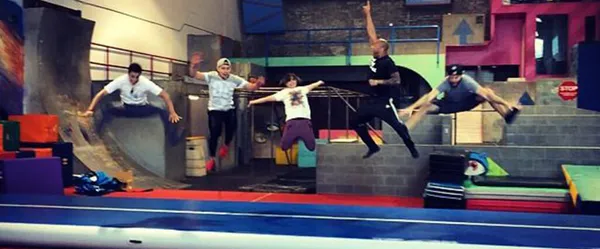
Parkour
Parkour is a discipline that involves overcoming obstacles by using movement. It is a physically and mentally challenging activity that can be enjoyed by people of all ages and fitness levels. Parkour can be practiced in both urban and natural environments, and it can be used to improve your strength, agility, and coordination. If you are looking for a challenging and rewarding activity that will help you get in shape and have fun, parkour is a great option.
- Benefits of Parkour:
- Improved strength, agility, and coordination
- Increased confidence and self-esteem
- Reduced stress and anxiety
- Improved problem-solving skills
- Greater sense of community
If you are interested in trying parkour, there are a few things you should keep in mind. First, it is important to find a qualified instructor who can teach you the basics of the discipline. Second, you should start slowly and gradually increase the difficulty of your workouts as you get stronger and more experienced. Finally, it is important to listen to your body and take breaks when you need them. Parkour can be a challenging activity, but it is also a lot of fun. With a little effort, you can learn the skills you need to overcome any obstacle that comes your way.
Freerunning
Freerunning is a discipline that is similar to parkour, but it is more focused on creativity and self-expression. Freerunners use their environment to create unique and challenging movements, and they often incorporate flips, spins, and other acrobatic tricks into their routines. Freerunning can be practiced in both urban and natural environments, and it can be used to improve your strength, agility, and coordination. If you are looking for a challenging and creative activity that will help you get in shape and have fun, freerunning is a great option.
- Benefits of Freerunning:
- Improved strength, agility, and coordination
- Increased confidence and self-esteem
- Reduced stress and anxiety
- Improved problem-solving skills
- Greater sense of community
- Increased creativity and self-expression
If you are interested in trying freerunning, there are a few things you should keep in mind. First, it is important to find a qualified instructor who can teach you the basics of the discipline. Second, you should start slowly and gradually increase the difficulty of your workouts as you get stronger and more experienced. Finally, it is important to listen to your body and take breaks when you need them. Freerunning can be a challenging activity, but it is also a lot of fun. With a little effort, you can learn the skills you need to create your own unique and challenging movements.
Which One is Right for You?
If you are trying to decide which discipline is right for you, there are a few things you should consider. First, think about your fitness level and experience. If you are new to movement disciplines, parkour may be a better option for you. Parkour is more focused on the basics of movement, and it is easier to learn than freerunning. However, if you are already experienced in movement disciplines, you may find freerunning to be more challenging and rewarding.
Second, think about your personality and interests. If you are someone who enjoys creativity and self-expression, freerunning may be a better option for you. Freerunning allows you to create your own unique movements, and it is a great way to express yourself. However, if you are someone who prefers to follow a more structured approach, parkour may be a better option for you. Parkour has a more defined set of movements, and it is easier to learn and follow.
Ultimately, the best way to decide which discipline is right for you is to try both of them and see which one you enjoy more. Both parkour and freerunning are great ways to get in shape, have fun, and challenge yourself. So get out there and start moving!
Here are some additional resources that you may find helpful:
- The Difference Between Parkour and Freerunning
- How to Get Started with Parkour as a Beginner
- How to Get Started with Freerunning as a Beginner
IX. Conclusion
Parkour and freerunning are two distinct disciplines with their own unique philosophies, movements, environments, and competitions. While they share many similarities, the differences between them are significant enough to warrant separate consideration. Ultimately, the best discipline for you will depend on your individual goals and preferences. If you're looking for a challenging and physically demanding activity that emphasizes creativity and self-expression, then parkour may be the right choice for you. If you're looking for a more structured and competitive activity with a focus on athleticism and performance, then freerunning may be a better fit. No matter which discipline you choose, you're sure to find a community of passionate and supportive individuals who share your love of movement.